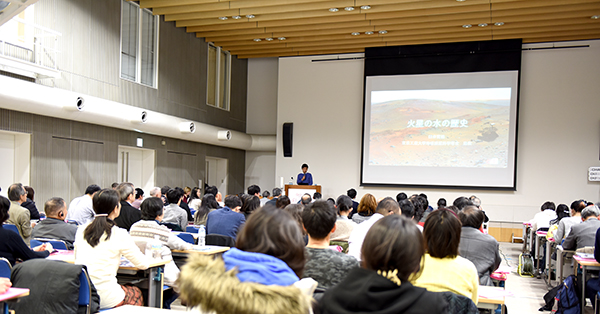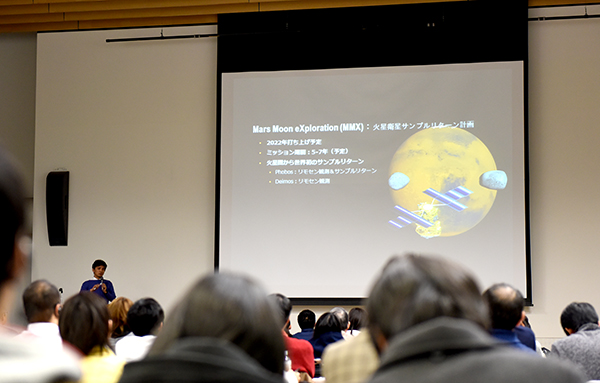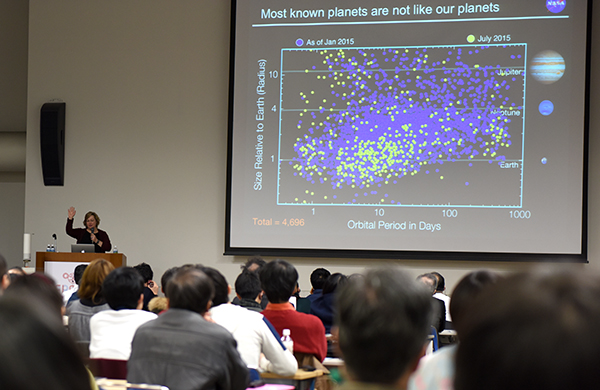Event
The public lecture "Does water define a planet's habitability?" was held
The public lecture "Does water define a planet's habitability?" was held on Tuesday, January 12 at Kuramae Hall, Tokyo Tech Front, Tokyo Institute of Technology.
Dr. Tomohiro Usui from the Tokyo Institute of Technology brought together the last few decades of data collected on Mars to discuss "The history of Water on Mars". 
He challenged the audience to select Mars from a group of unfamiliar planetary images. It was a fun trick as all the images were of Mars as imagined from different time periods in its evolution. The NASA rover images have provided images and chemistry measurements with evidence of a vigorous water cycle on early Mars. 
While there are only a few locations on our dynamic Earth with surface rocks over 1 billion years old, the entire Martian surface is dominated by processes before or around 3 billion years ago. Measurements of the Martian atmosphere are exact match to atmospheric gases trapped in meteorites found on Earth, identifying them as Martian meteorites.
Dr. Usui is a petrologist studying the minerals in these Martian meteorites to uncover the history of Mars billions of years ago. The results reveal that Mars repeatedly formed oceans that eventually disappeared to space and became locked as ice in the subsurface. While water is no longer standing in oceans or lakes at the surface, recent images show that briny water seasonally flows down the sides of cliffs in Garni crater. Examining the Martian rocks can reveal its ancient deep water cycle as we try to gain insight as to why there is no sign of life from this potentially habitable time in Mar's history.
Dr. Victoria Meadows from the University of Washington/NASA Astrobiology Institute took the audience on a visually stunning tour of the planetary possibilities guided by exoplanet observations in her talk "NASA's Search for Life Beyond the Solar System".

Around 20 years ago scientists began to measure the effects planets can have on their host stars including small movements of the star due to the planet's gravity and dimming of the star as the planet passes directly between us and the host star. The NASA Keppler space telescope was launched to stare at one small patch of sky and found thousands of stars in just a few years. Much to our surprise, most of planets appear to be very different than our Earth and the planetary systems are very different from our solar system. These observations challenge our notions of habitability, which is a general term for how likely we think a planet may be able to develop life based on temperature, liquid water, atmospheric chemistry and a growing number of factors as we begin to understand the complexities of our own planet.

NASA's future mission TESS will look at much closer stars to be able to collect characteristics such as mass, size, and density of planets while the infrared JWST will attempt to determine atmospheric chemistry. Since these and missions in the distant future can only examine a tiny fraction of stars in the sky, Dr. Meadows works to understand how to identify which planets may be the most habitable. One eye catching new method she developed is to observe the sunlight glint off the water from a planetary ocean and has even verified the technique on the methane oceans of Saturn's moon Titan. It is truly an exciting time to consider the effects life has on a planet and how we might begin to observe the signals from tiny points of light.












